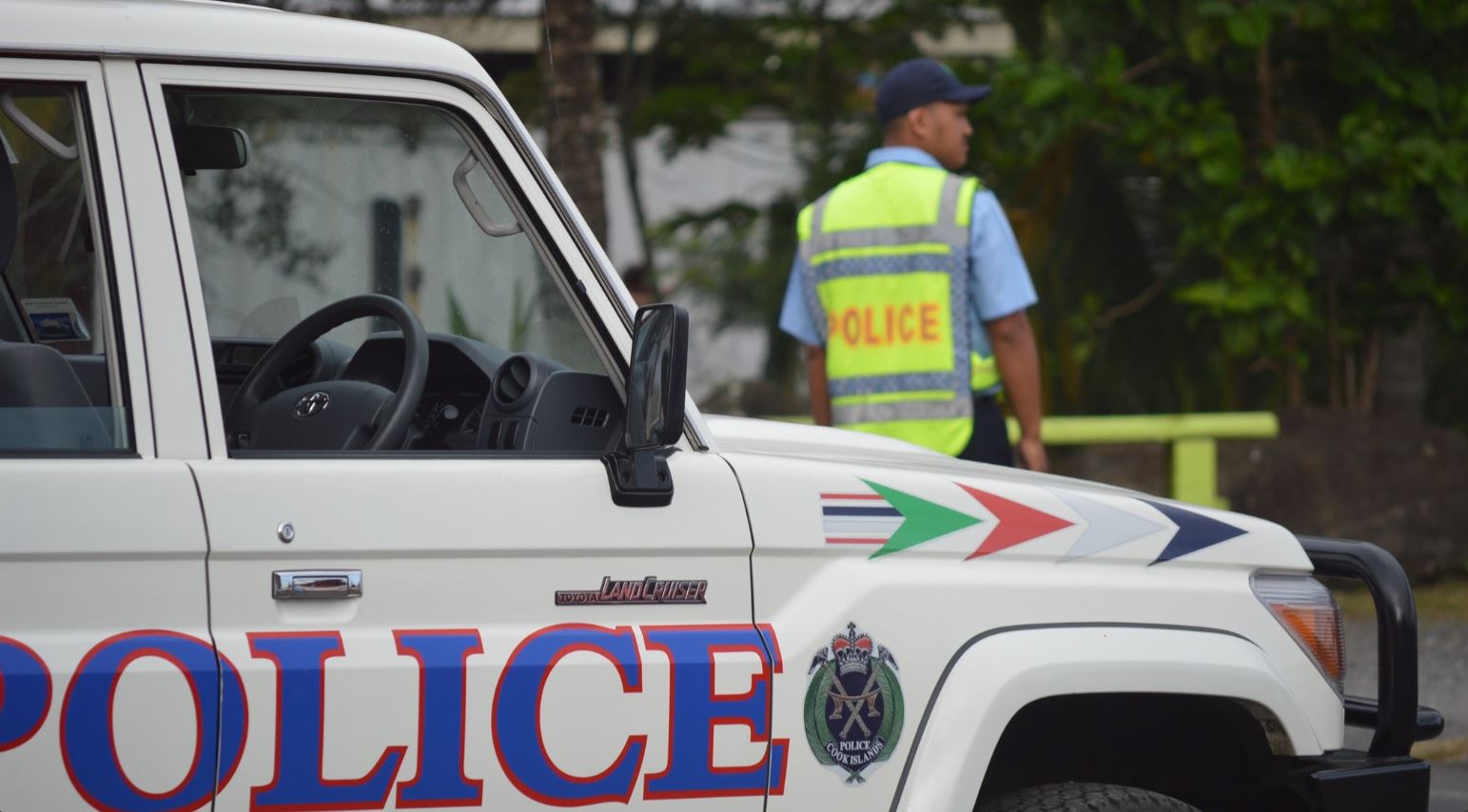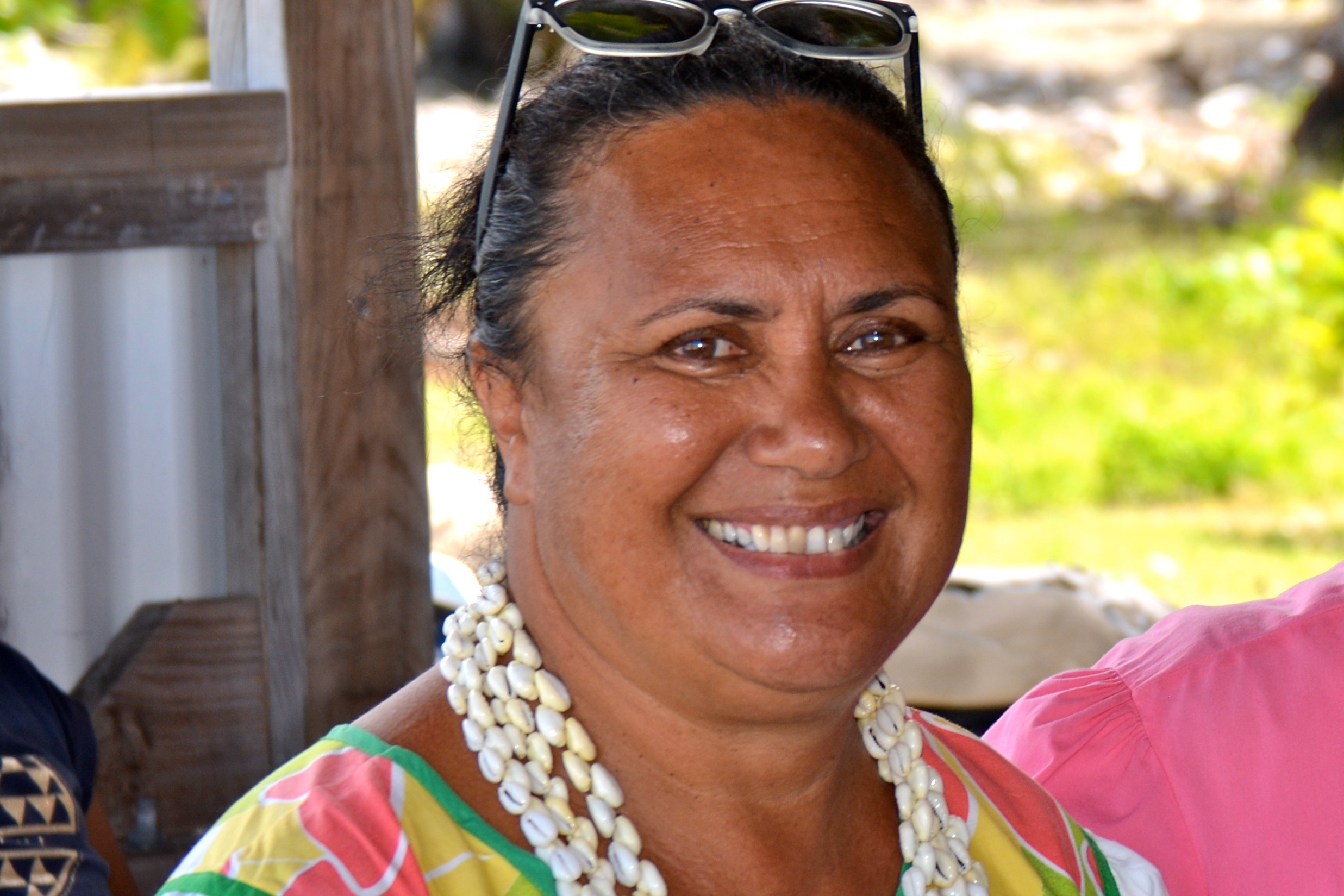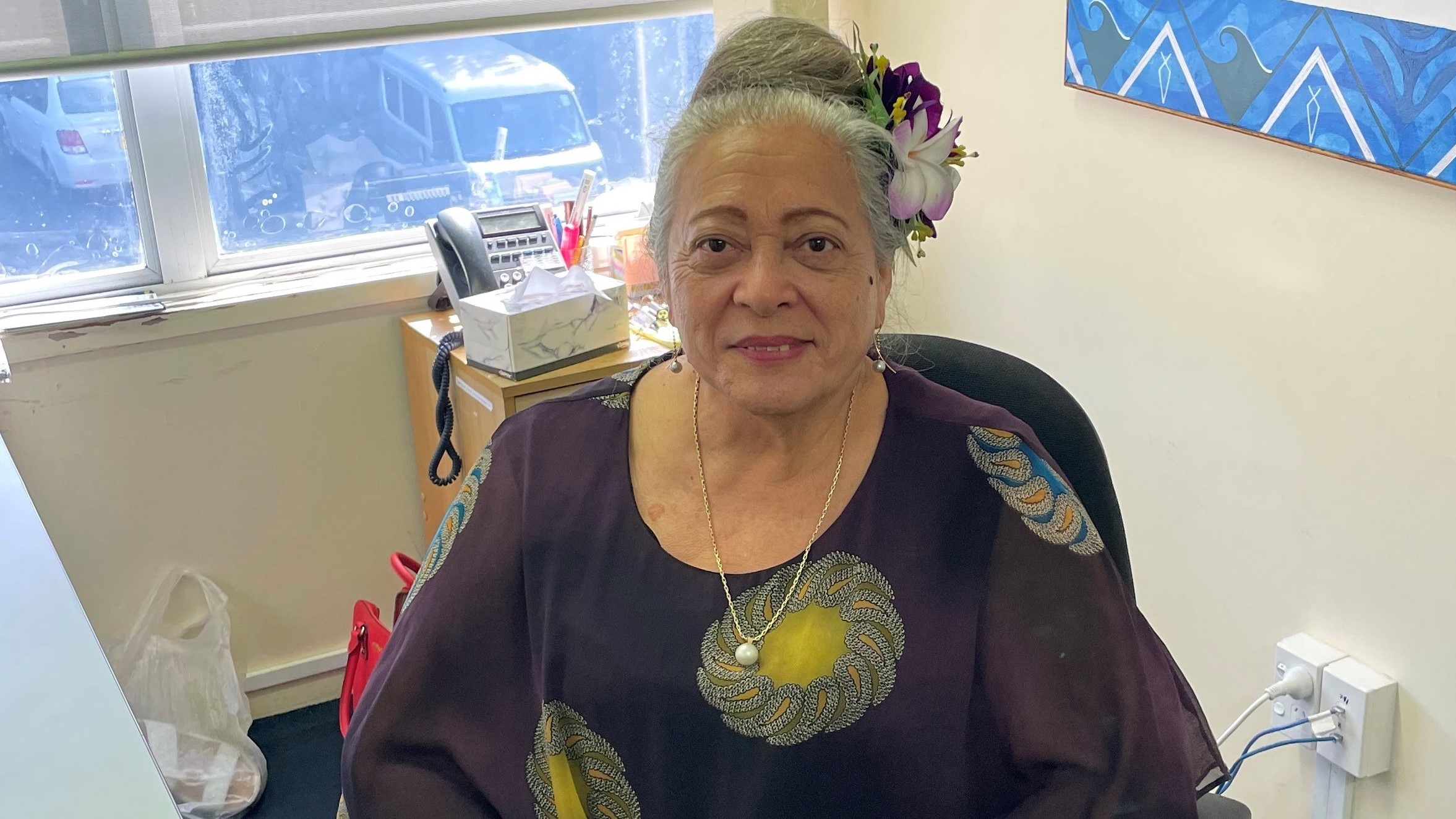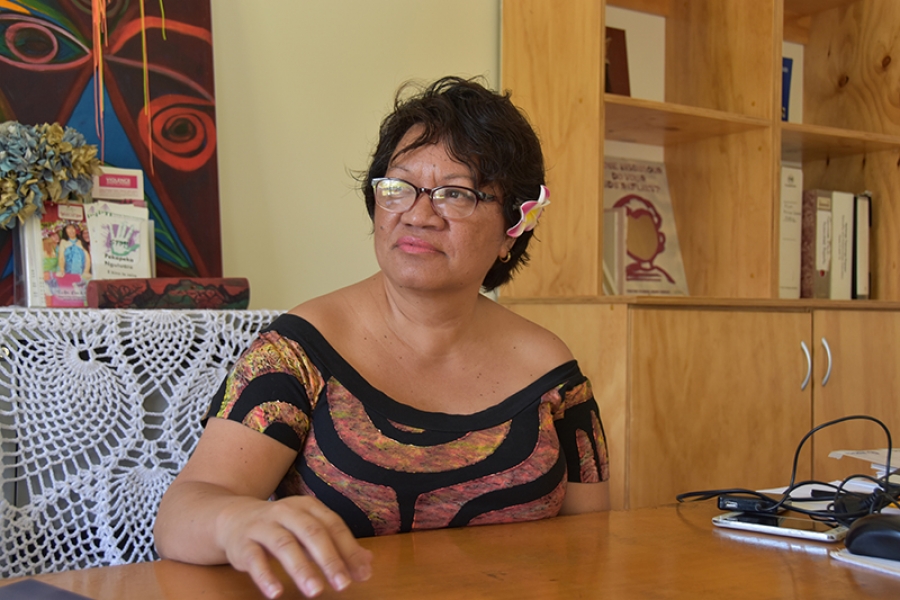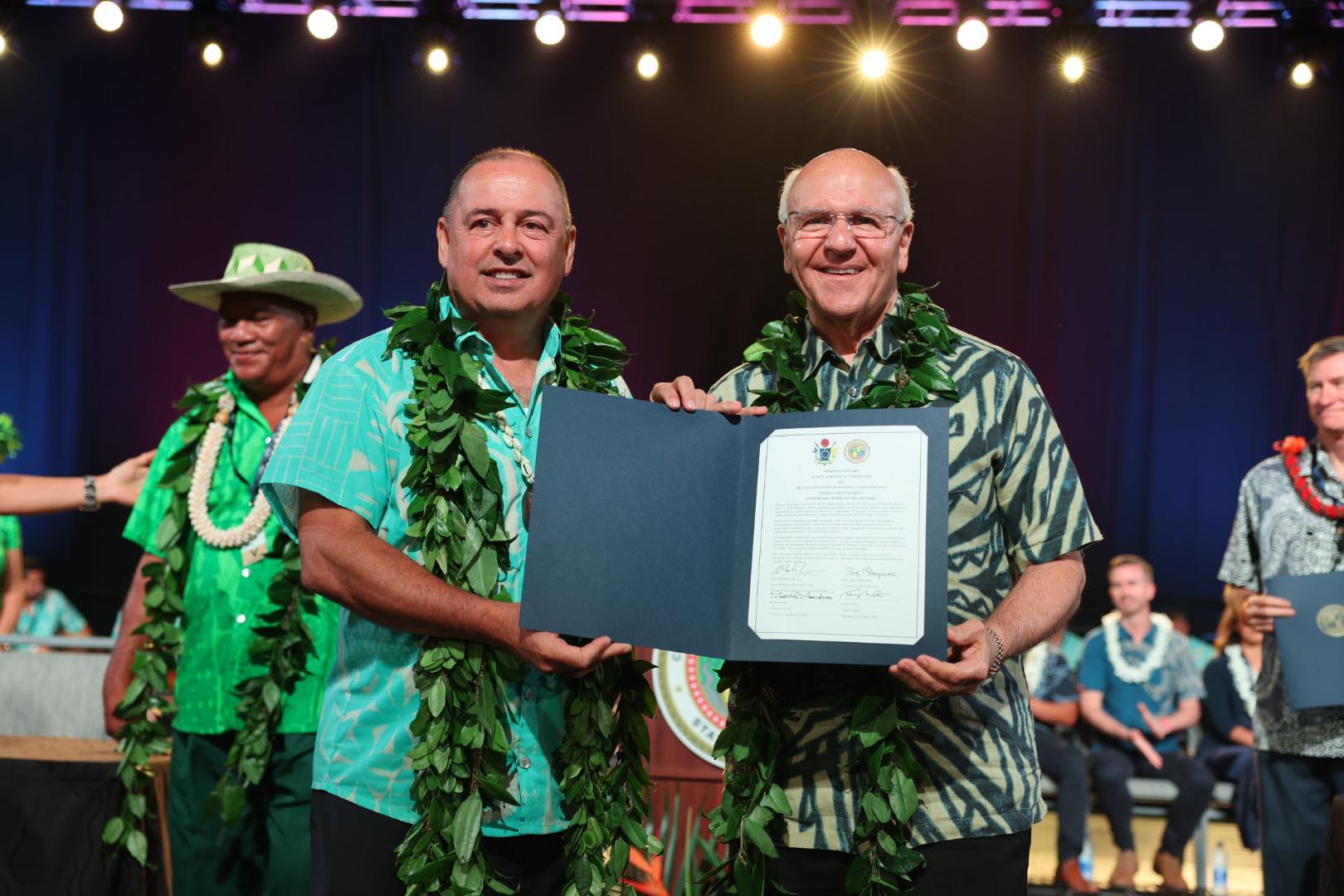New book explores impact of Christianity on Mangaia
Saturday 8 June 2024 | Written by Rod Dixon | Published in Church Talk, Features, Memory Lane

Guests from Tokoroa, New Zealand, arrive on Mangaia. Mangaia Bicentennial Celebrations/24060730
Mangaia accepted Christianity 200 years ago this month. A permanent peace – te au o te Evangeria - was the main dividend of the new religion and, according to a new book to be launched this weekend, peace justified the sacrifice of ancient customs and traditions to achieve, writes Rod Dixon.
“Te Au Tārere – the Peace from Afar” is a new book produced by the Mangaian Historical Society as their contribution to the Bicentennial of the arrival of Christian evangelists on Mangaia on June 15, 1824.

“Te Au Tārere – the Peace from Afar” is a new book produced by the Mangaian Historical Society as their contribution to the Bicentennial of the arrival of Christian evangelists on Mangaia on June 15, 1824. SUPPLIED/24060713
The book will be launched at the opening ceremony of the two-hundred years celebrations on Mangaia today, June 8.
The book, running to 328 pages, describes the successful landing of two Tahitian evangelists in 1824, the story of the early converts (the kai parau) and the unconverted (tutae ‘auri) and their eventual war in 1828. A fourth chapter deals with the change to everyday life under Christianity and the relationship that developed between the church and traditional leaders embodied in the concept of the church as the tama ‘ua (‘son of the thigh’) of the aronga mana.
In their introduction, the Historical Society explains that the title of the book “Te Au Tārere” derives from an old saying that permanent peace, absent from Mangaia for several centuries, was finally introduced in 1824 from outside the island – hence the subtitle, “the Peace from Afar”.

The Mangaian battle formation – spearmen in the first row, clubs in the second row for close fighting, sling shooters in the third row and, in the back row, women and children supplying sling stones and replacement weapons to the warriors in front. SUPPLIED/24060714
“According to our ancestors, this permanent peace was the main dividend of the new religion and justified the sacrifice of ancient customs and traditions to achieve.”
The final three chapters document the history of the island’s three main Churches and identifies the orometua and their wives who served these churches over two centuries.
An appendix lists the almost 100 Mangaian orometua and their wives who served in Christian missions overseas between 1840 – 1910. These lists are incomplete because too few of the wives’ birth names were recorded in mission records. This is a subject for ongoing research.
Two short essays document two of the most notable of the Mangaian missionary wives, Tungane (wife of Rakoia) known as ‘the Duchess of Port Moresby’ with a well-earned reputation as a more competent teacher and evangelist than her famous husband, and Maki (wife of Piri). Maki was acclaimed by European missionaries as “one of the finest teachers sent to New Guinea” and one of the finest whale boat-handlers. A longer essay details the life and career of Mamae, also known as Koroa-iti or Sadaraka, a mid-nineteenth century Mangaian orometua and the island’s most prolific historian in the tara Mangaia.
The book draws on published historical sources and recorded traditions. Some previously unknown facts emerged from the research. For example, that the 1828 war between the Christian converts and ‘heathens’, was provoked by the leading Christian evangelist Davida and supported by a band of 17 Aitutakians led by Tupu Ariki of Aitutaki, supported by a musket-wielding American. The Aitutakians had arrived in a drift canoe and remained on Mangaia from 1827 – 1830.
During the battle Tupu ariki encountered a Mangaian woman, fighting alongside her husband on the front line. According to Reverend John Williams’ account of the battle, Tupu ariki called out, “Woman desist! I am not come to fight women” to which she replied, “If you kill my husband what shall I do?” and immediately threw a stone and felled him to the ground. “Had it not been for the prompt assistance of his own people, he would have lost his life at the hands of her husband.”
Normally women occupied the fourth row of the traditional Mangaian battle formation, supplying replacement weapons and stones for sling shooters in the third row, while the first and second lines of battle were held by the fiercest warriors and their first-born sons. But women were also found near the front line armed with heavy tikoru cloth which they threw onto incoming spears to deflect them from their mark. Heavy tapa cloth was also wound around the head and body of the warriors as a form of armour.
The battle between converts and ‘heathens’ in February 1828 was the last of the 42 recorded battles on Mangaia. After such a troubled past, the au o te evangeria, is still regarded on Mangaia as the great achievement of Christianity. To secure this peace, Mangaians actively abandoned old customs including polygamy and human sacrifice. At the same time the unconverted or tutae auri continued to oppose the new religion in large numbers for at least another 40 years.
Under the mission, a new form of island government was established – pava or warriors were transformed into puna governors or ‘kavana’. The position of island ruler – the ua mangaia – was abandoned and the former inland high priest, the ariki Numangatini, became the new head of government.
As war was abolished, land allocations established at the last war, were confirmed and thereafter land and titles were inherited from father to son, rather than through battle.
Women’s traditional roles were challenged, and women and children spent less time in the taro and lagoon and more time in the women’s circles and in mission schools where adult women quickly outnumbered men.
Roads and bridges were built to link church communities in the island’s three villages. Villages were rebuilt on coastal locations, and residential sites allocated under a system of tenure known as akano’oanga oire, alongside village churches, schools and the market house.
For the next 90 years education was conducted entirely in Māori. The mission era was the golden era for the production of books, including school texts, written in Cook Islands Māori and printed in the Cook Islands.
Another by-product of the book’s research was the discovery of a hymn, written by the European missionary on Mangaia, Rev. George Gill, called “Beautiful Zion, Built Above”. The hymn refers to the chapel, Punanga (or ‘Barbican’), built on the Mangaian makatea in late 1845 but destroyed in the hurricane of March 1846.

Rehearsals for the Mangaia Bicentennial Celebrations starting today. Mangaia Bicentennial Celebrations/24060726
‘Zion’ is God’s dwelling place, a place of salvation, and temple of eternal life. The hymn includes local referents such as “Beautiful crowns on every brow…” and the island’s palms and springs, before returning to a vision of the 1845 church on the hill, “Beautiful temple, God its light.”
While unknown on Mangaia today, the hymn remains popular in LDS and Adventist hymnals. (A rendition by the Mormon Tabernacle Choir can be found on YouTube).
The book will be launched by the ariki Numangatini and members of the Mangaian Bicentennial Committee. It will be available for sale after the launch and online at https://au.blurb.com/b/11962018-te-au-tarere.



















